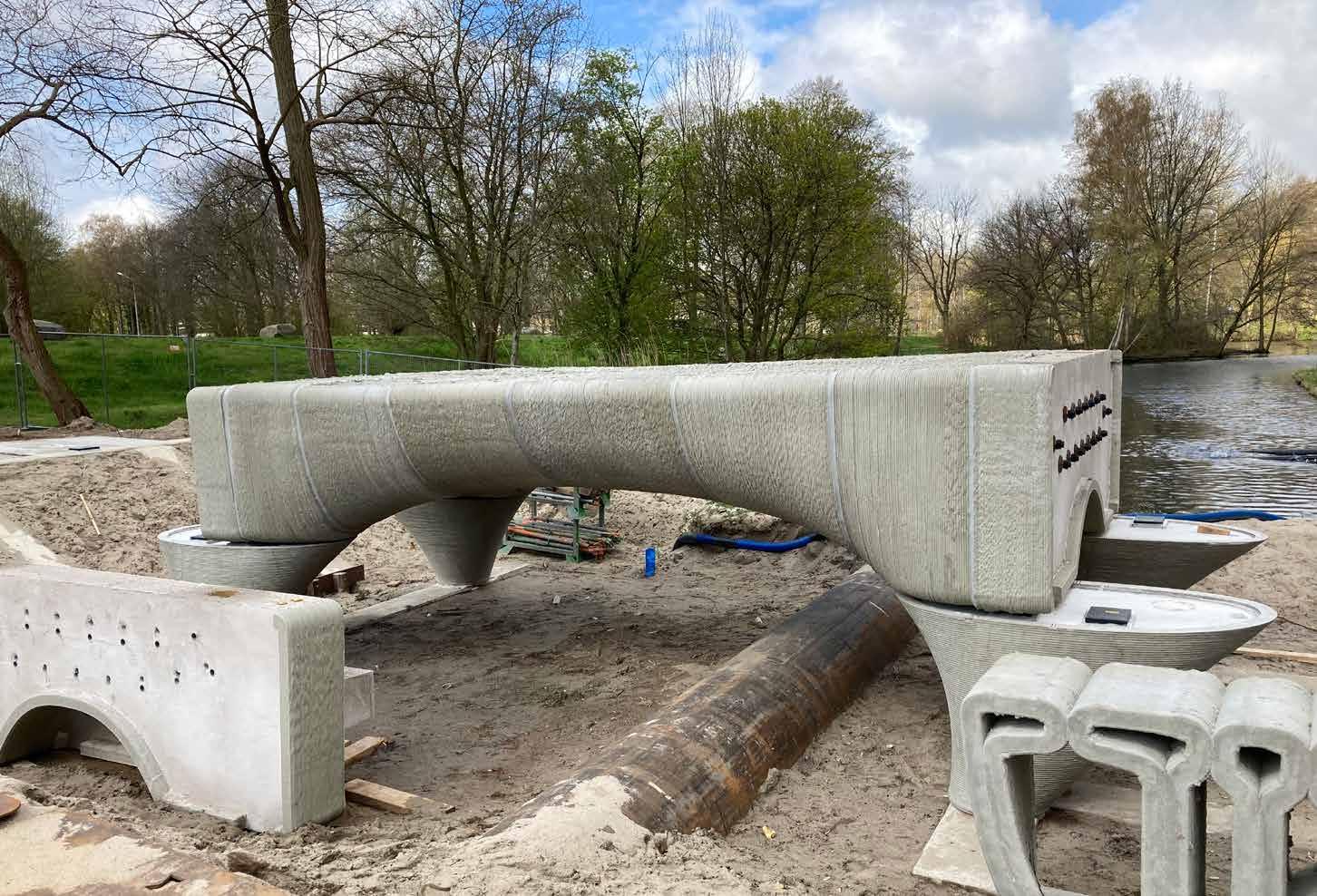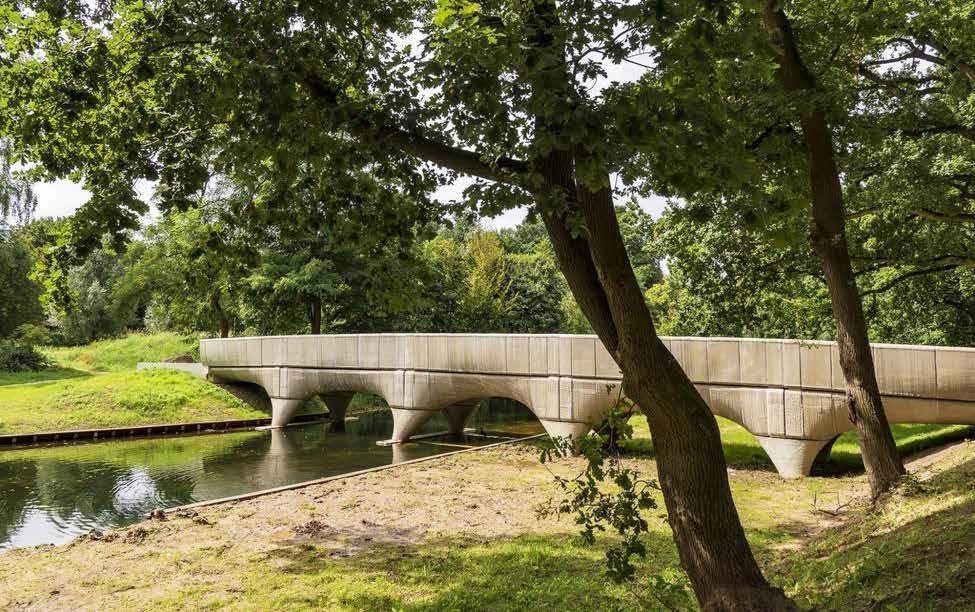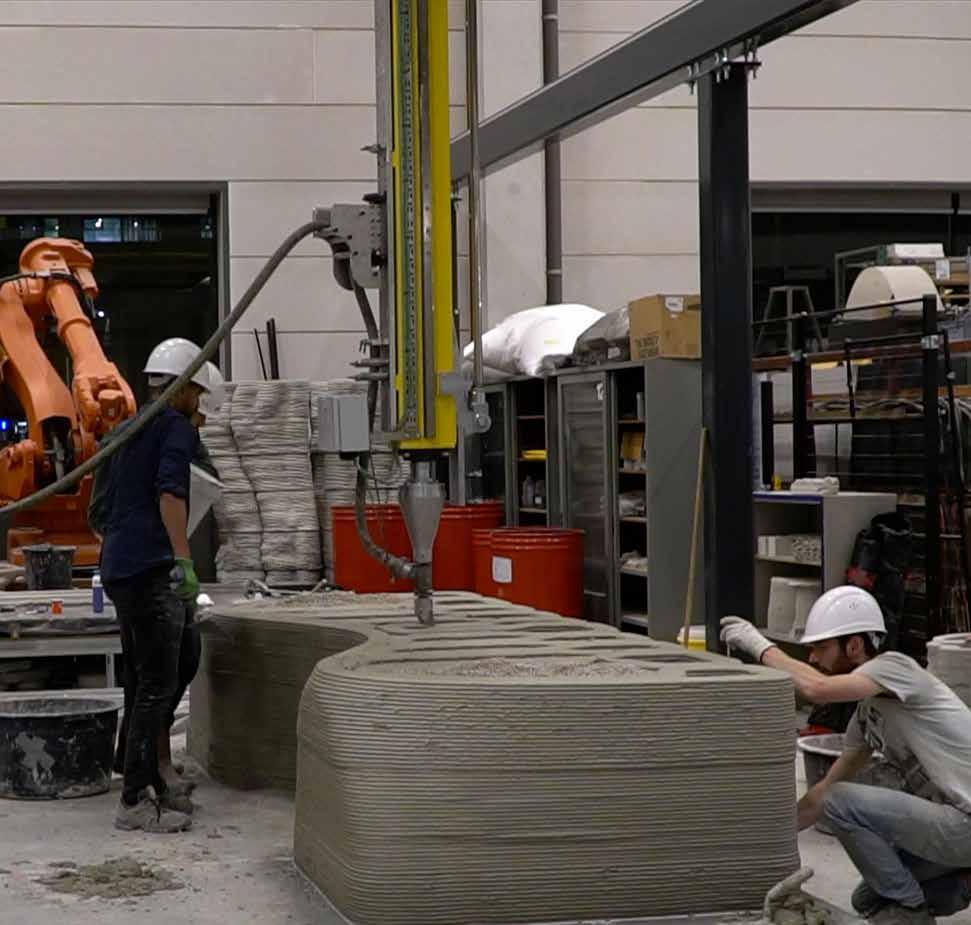
2 minute read
The longest 3D-printed concrete bicycle bridge in the world
from IM20215EN
During the printing process, the choice was made to divide the bridge into printable parts (Photo: Michiel van der Kley)
Advertisement
With a length of 29 metres, the Dutch city of Nijmegen owns the longest 3D printed concrete bicycle bridge in the world. The project is unique because the bicycle bridge has been designed with complete freedom of form, thanks to research at Eindhoven University of Technology and the further development of 3D concrete printing technology. The new appearance in De Geologenstrook park is characterised by its round and wavy shapes.
The bridge was printed layer by layer in the concrete printing factory of Saint Gobain Weber Beamix and realised by the construction group BAM. It is not only the longest, but also the largest concrete bridge in the world. Architect Michiel van der Kley was able to work freely on the design and was not
restricted by the material or traditional processes, such as concrete formwork.
Because the span is not constant everywhere and therefore the changing weight of the structure had to be taken into account, the choice was made to divide the bridge into printable parts. A parametric model - that means based on data - was used to generate the final design.
In theory, printed bridges can be built much faster than ordinary bridges, with more flexibility and more room for personalised designs. They are also

The 3D-printed concrete bicycle bridge in Nijmegen (Photo: Municipality of Nijmegen)

The bridge was printed layer by layer in the concrete printing plant (Photo: Michiel van der Kley)
more sustainable, as less concrete is needed. The ambition of the partners in this innovative project is for 3D concrete printing to eventually become a sustainable construction method that can be used for the production of bridges and houses, among other things.
That is also the reason why Rijkswaterstaat, together with designer Van der Kley, took the initiative for this project. They donated this special bridge as a permanent reminder to the municipality of Nijmegen in honour of its election as European Green Capital 2018. For the right knowledge and expertise, two launching partners turned to Theo Salet, an expert in the field of 3D printed buildings. Consultancy and engineering firm Witteveen+Bos translated the design of the bridge into printable structural components. The parametric model of the bridge was developed by Summum Engineering.







